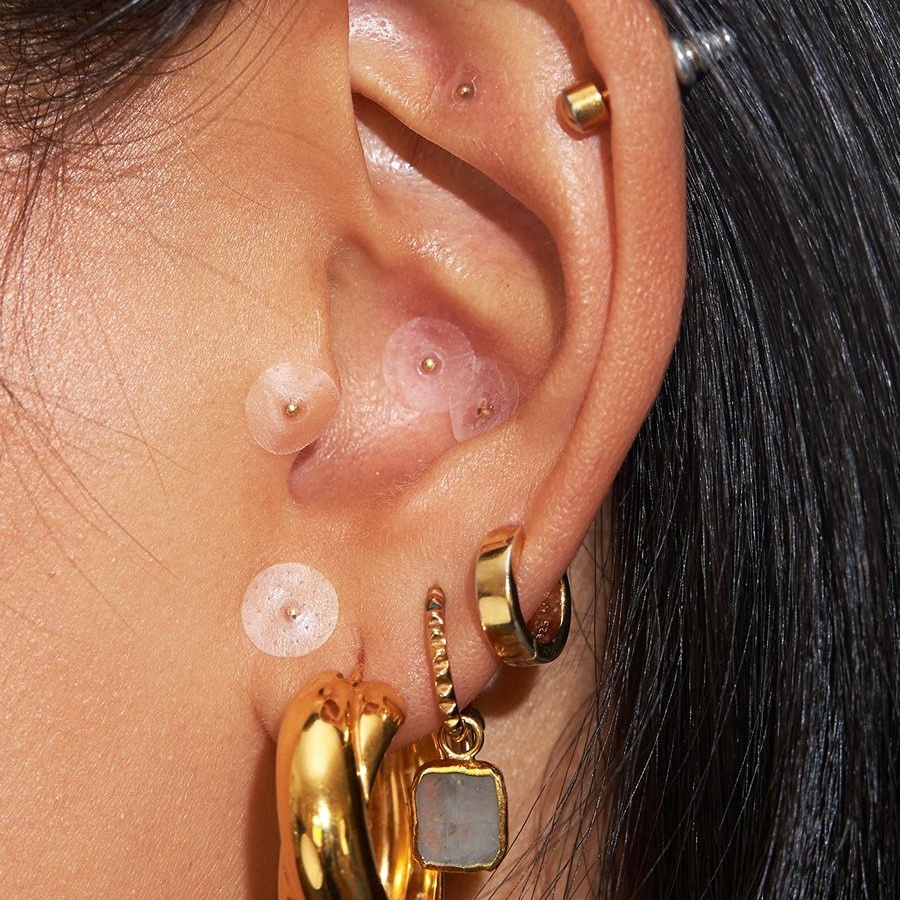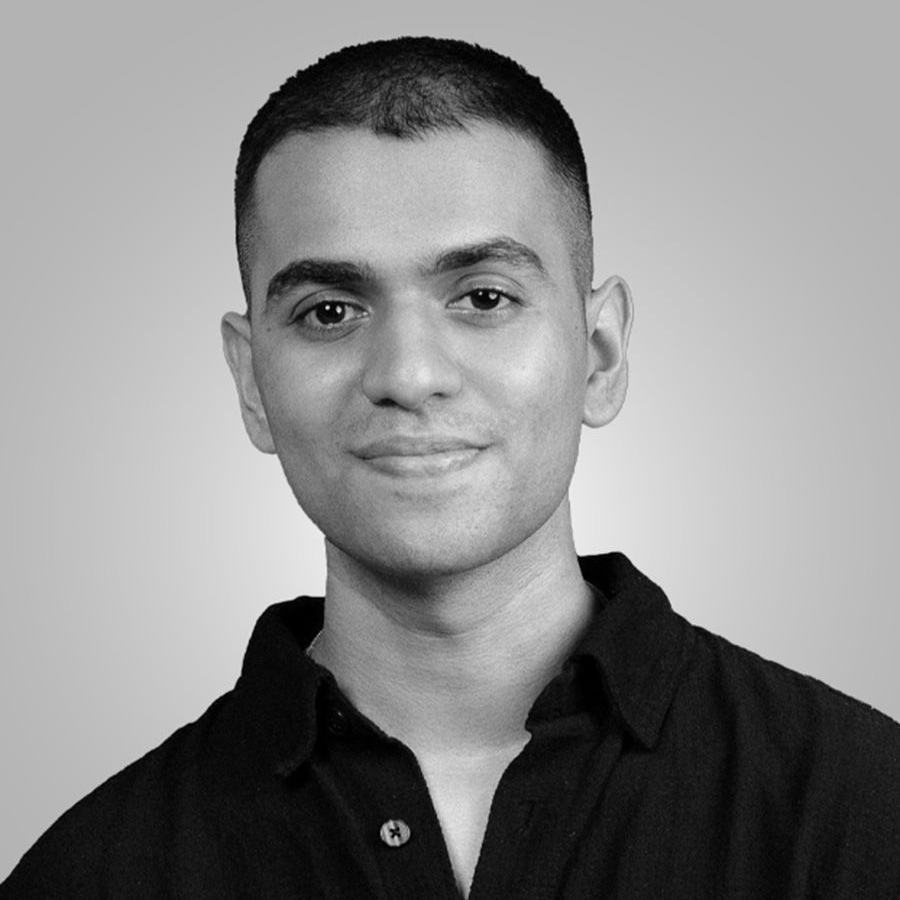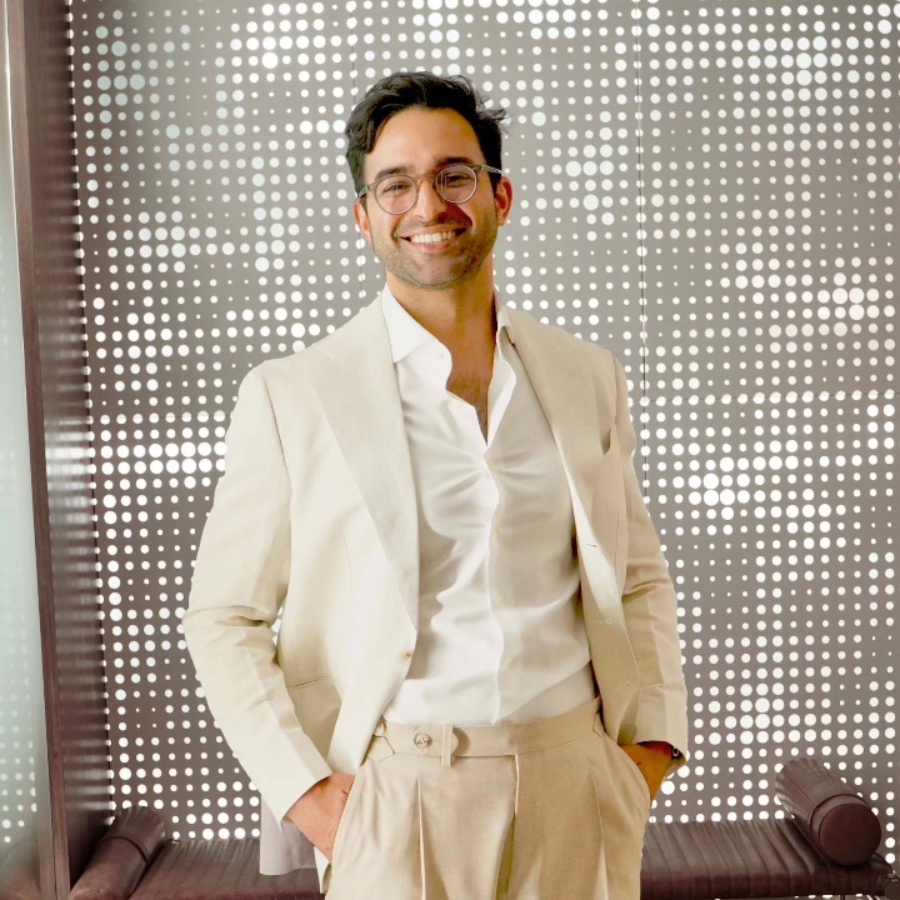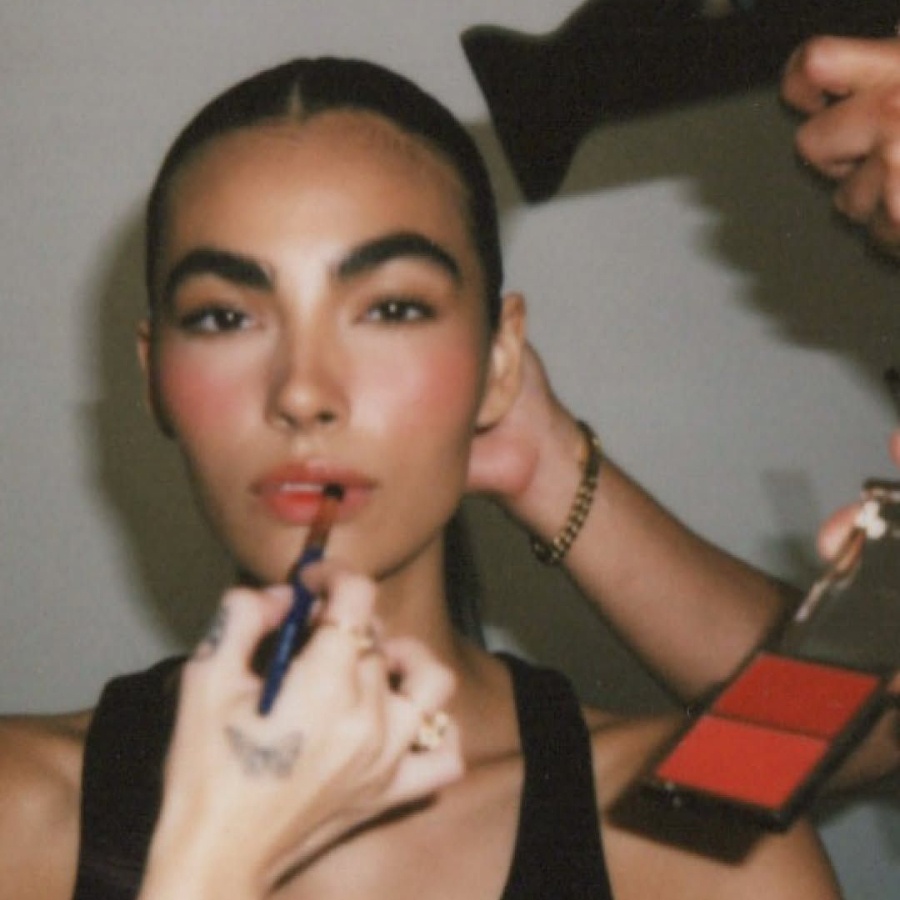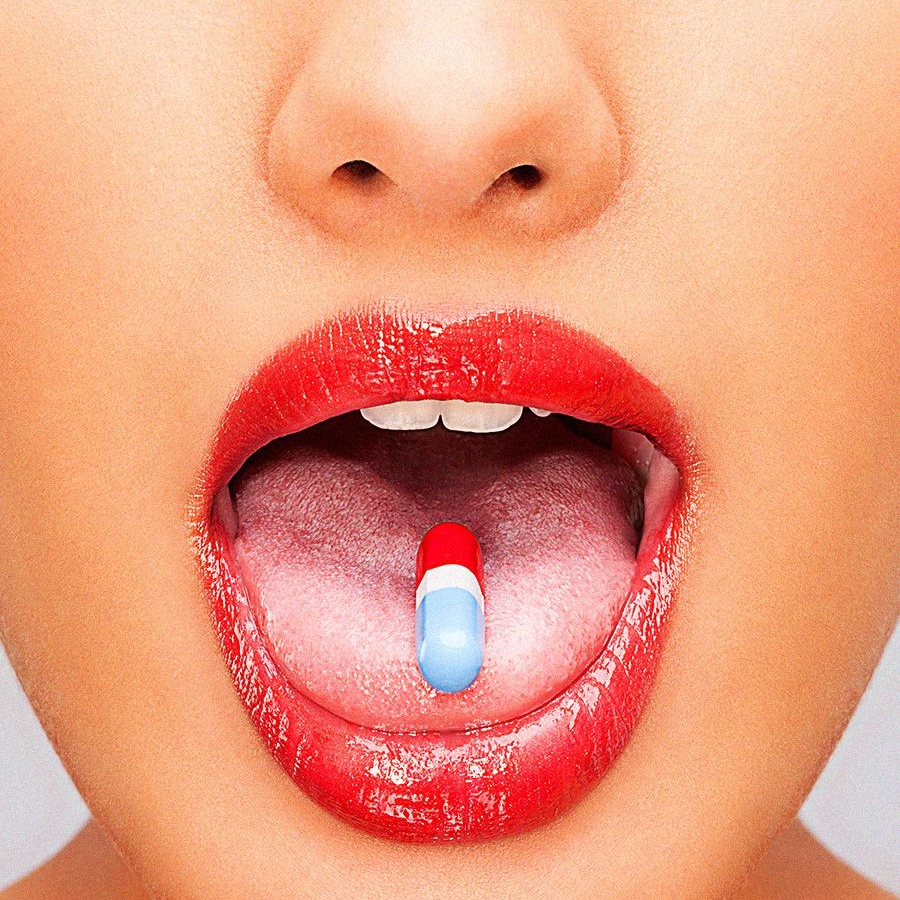Imagine this: a stranger’s gloved fingers are inside your mouth, fishing around the back of your molars, stretching and tugging muscles you didn’t know existed, prodding at the emotional debris supposedly stored in your jaw. You’re on the verge of tears, the practitioner murmurs something about “releasing stagnant energy”, and your jaw trembles in a way you’ll later describe as “transformative”. Forty minutes later, you sit up dazed, cheekbones gleaming like your face has just been resculpted entirely. Clearly, this is not your typical cucumber-slice facial.
Increasingly, the facial has stopped being a pampering ritual and started occupying a new space—somewhere between spa treatment, sports therapy, traditional medicine, and emotional release session. The new beauty appointment is less aromatherapy-and-relaxation, more intervention-lite: a little discomfort, a lot of kneading, and the promise of visible results—lift, depuffing, tension release—often within the hour. And the vocabulary is expanding accordingly: buccal sculpting, lymphatic drainage, gua sha, facial reflexology, cosmetic acupuncture...
Across Instagram, TikTok, and urban wellness circles, these holistic treatments are being touted as “natural alternatives to Botox”, promising visible lift without injectables and a kind of inner-outer calibration that traditional spa facials never claimed to offer. And for the notox crowd—those who want the effect of Botox without actually injecting anything foreign into their faces—these facials feel like the sweet spot. People don’t just want to look better; they want to feel better while getting there. And in 2025, that means letting someone stick needles into your face or knead your face from the inside out.
The shift makes sense once you speak to those who practise these treatments. One of the most sought-after is Sofia Wu, a traditional Chinese medicine (TCM) practitioner based in China, who flies to India once a month—not to run a clinic but because her friends (some of whom happen to be Bollywood names) won’t let her skip a visit. “I work for passion,” she says. “I love sharing knowledge and helping people get into self-healing.” Her gua sha facials are less about glow and more about undoing. “The massage essentially is like a release,” she explains—releasing tension and knots from the fascia, the skin, and the body. “It’s a long process, so you can only see results after a few sessions,” she says, explaining why she prefers teaching self-care through workshops so clients can work on themselves daily.
Her entire perspective pivots on one idea: the face reveals what the body is holding. “The face is the reflection of our inner self,” she says. If stress shows up in posture and sleep, it shows up on the face too. For Wu, beauty is simply the by-product of internal wellbeing. Even facial acupuncture, in her view, is about the inner system. “The face has a small map,” she explains. “Everything we do on the face is connected to the body. I think of acupuncture as a kind of a painkiller and as something to heal the inner system.” The cosmetic benefit is the after-effect, not the goal. Only when the inner system is smooth, she says, does the outer glow.
But the current demand for these treatments isn’t driven by poetic philosophy alone. For many urban clients, the draw is less spiritual and far more visible—lift, definition, de-puffing—and the person delivering those results every day across Delhi-NCR is Shashikant ‘Skant’ Sharma. A former foot reflexologist and sports therapist, Skant stumbled into buccal therapy in 2018 through wellness travellers visiting India. Today, he’s one of the busiest buccal therapists in the capital, starting appointments at 8 am, travelling across the city with his bag of gloves and tools like a door-to-door jaw specialist, and often ending his day having tended to a dozen faces.
“Sometimes I have six clients in one house,” he says, before clarifying, “This is definitely not a normal facial.” He describes his signature buccal therapy as a “magical and a natural Botox alternative” that involves an intra-oral massage combined with lymphatic drainage. Sessions begin with a test that sounds like a party trick: he asks clients to open their mouths to check how easily four fingers can slide in. “If the four fingers don’t go in with ease, the masseter is stiff and needs to be released.”
Once he begins, he claims to go deeper than any tool could. “I go much deeper than a typical gua sha massage or the cupping method. The therapy resolves knots in the face that are caused by emotional trauma, increases blood flow instantly, and flushes out stagnant lymph.” He explains, almost clinically, how a blocked lymphatic system can cause acne, especially in the lower face along the jawline and down the neck.
The results—plump skin, a sharper jawline, a general sense of lightness—show up with weekly sessions, and he also hands out 10-minute exercises for morning and night to improve skin elasticity and prevent wrinkles. But he’s also blunt about lifestyle. “A lot of people expect instant results without following protocols like increasing water intake, sleeping well, and reducing their alcohol intake. You can do whatever treatments and however many times, but if the client doesn’t make an effort with their lifestyle habits, it’s no use,” he says, adding his younger clients tend to follow instructions better.
The 28-year-old practioner has built a loyal clientele through social media and word of mouth. Stylist Daniel Franklin, who gravitates toward holistic treatments over injectables, first heard about Skant through his neighbour. He gets buccal therapy sessions once or twice a month, and feels “flushed, lighter and brighter” after every session. Franklin says his skin feels more hydrated and smoother afterward, though the treatment itself is intense. “You feel like your skin elasticity has improved and your fine lines have been smoothed out a little bit. But it’s definitely not relaxing,” he says. “Your skin is being pulled, prodded, and poked. It’s a little bit like a workout.”
Fashion designer Shweta Kapur came across Skant on Instagram years ago—back when buccal therapy was still fringe. “I’ve always been scared of needles and the Botox side of things,” she says. “It started more out of curiosity.” What surprised her wasn’t the technique but the realisation that the face has muscle knots. “I realised there are knots on the face as well, just like you have on the muscles in your body. What he essentially does is open the knots on your face, and your face visibly looks toned and lifted. I feel like my jawline too looks more defined after a session.”
Skant also makes his clients take before-and-after photos, and both Franklin and Kapur see the difference. Kapur recommends buccal therapy to the younger crowd hesitant about injectables. “This is a good place to start,” she says. “If eventually nothing else works, then go for it.”
Her other go-to is Dr Aadil Khan, a second-generation acupuncturist whose family clinic in New Delhi has been running since 1977. She originally visited him for back pain and tried facial acupuncture when she saw a bunch of clients walking in one by one for their faces. Cosmetic acupuncture wasn’t originally part of Khan’s practice, but since introducing it in 2014-15, he’s seen steady growth. “I have constantly seen a rise in clients for aesthetic reasons—both young and old. They usually come in before weddings, a photoshoot, fashion shows or events,” he says. His signature approach is called Acuglow: a 30-minute session that involves adding needles to various points of the face. “It helps with wrinkles, fine lines, pigmentation, puffiness, and sagging skin, and gives you a very fresh look. That tired look on your face isn’t there anymore.”
But Khan insists that the cosmetic benefit is secondary to what’s happening internally. “Most of the points we treat on the face are related to internal organs,” he says. “When we needle the points, I am treating their constitution. The increase in production of collagen and elastin is the add-on benefit.” For the best results, he recommends two Acuglow sessions a week, 10 sessions in total. While he doesn’t combine modalities, he recommends collagen and glutathione supplements and is honest about defining the limits: “Cosmetic acupuncture cannot change your looks, but it can keep the same look in the best ever form.”
The glow, however, is real. Kapur remembers her first facial acupuncture session and was shocked by the ease of the process: “You just lie down; he sticks a bunch of needles in the face for about 30 minutes and that’s it. I had these spots on my face that reduced quite a bit and my face was glowing for two weeks.”
Beauty author and podcaster Vasudha Rai has a similar story. She too first visited Khan for pain relief and tried a “mini facial” purely out of convenience. “I was blown away by the results. My skin looked much more rested. I was glowing. There was an imperceptible but slight lift,” she says. “Overall, my face just looked healthy and rested, which I loved.”
Rai considers spa or salon facials entirely DIY-able. “I’m good at massaging my face with my fingers and tools… Cosmetic acupuncture releases muscles, which is really important.” As for bougie high-tech dermafacials? “I wouldn’t say it’s comparable. Those are very expensive, and the effect is barely 10 to 20 per cent, if I’m being generous.”
For Rai, the deeper draw is functional: she has severe TMJ (temporomandibular joint disorder), and tight masseters, she explains, can contribute to sagging skin. She sees cosmetic acupuncture as part of long-term maintenance: releasing the jaw, easing tension, improving sleep and mood. “It’s a tall order for just cosmetic acupuncture to solve everything, but it is one of the many things that will resolve it. I do want to have that holistic treatment where I relax my mind, ease out the TMJ, and release the masseters, which will eventually affect the way my face develops as I grow older,” she adds.

